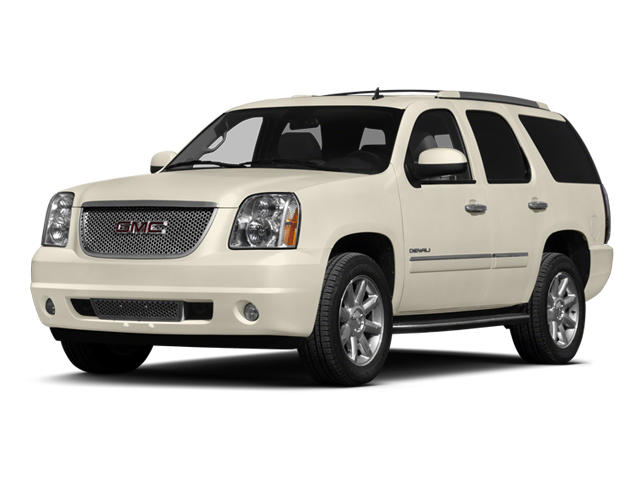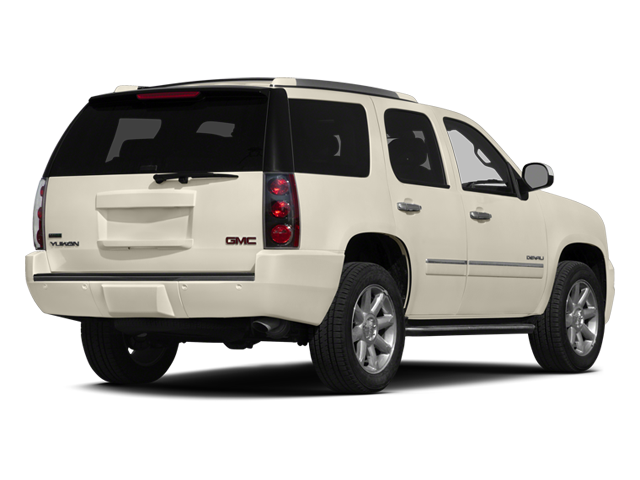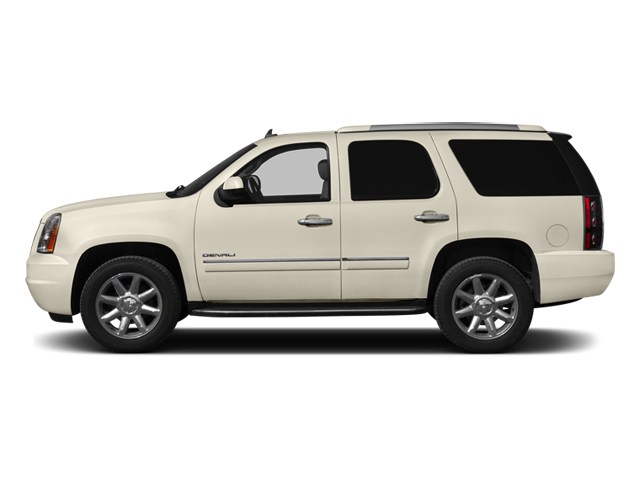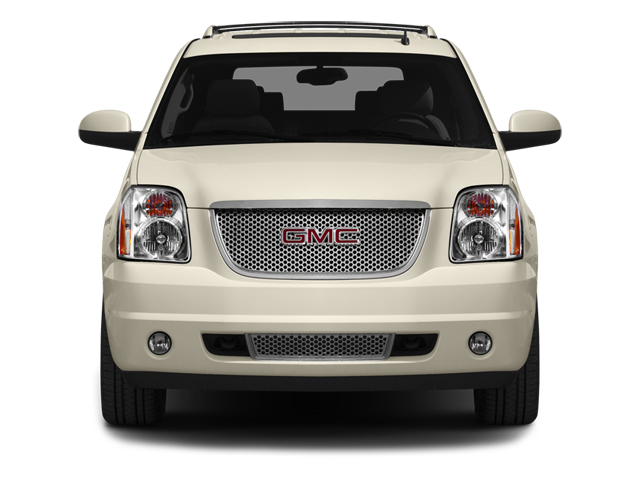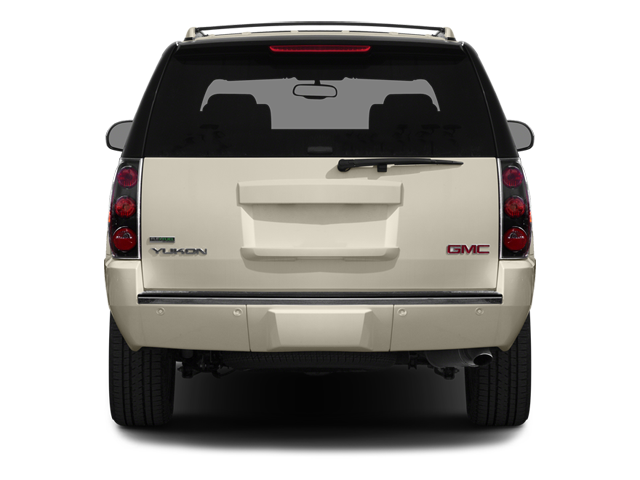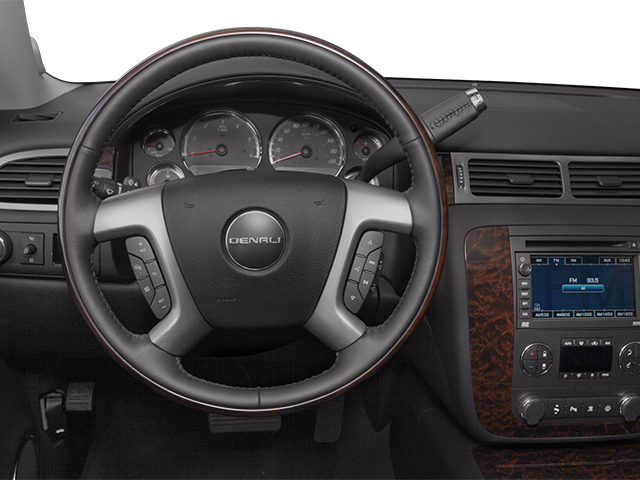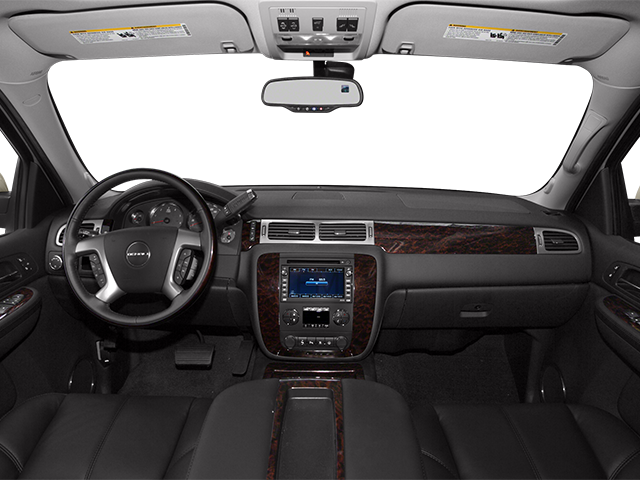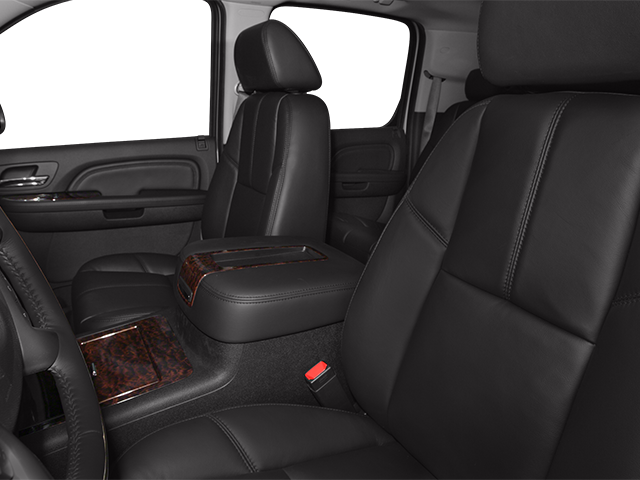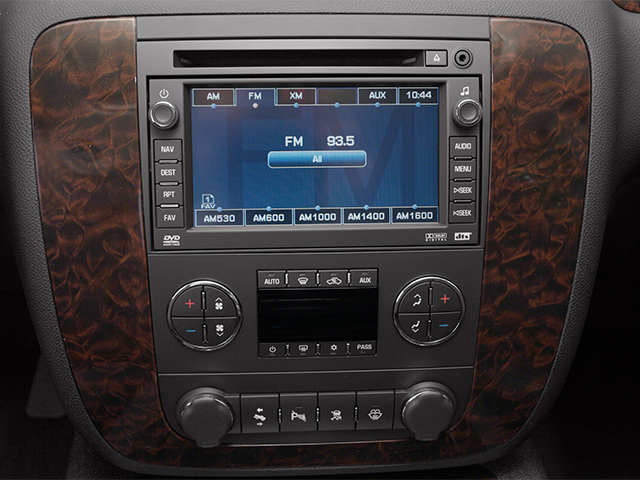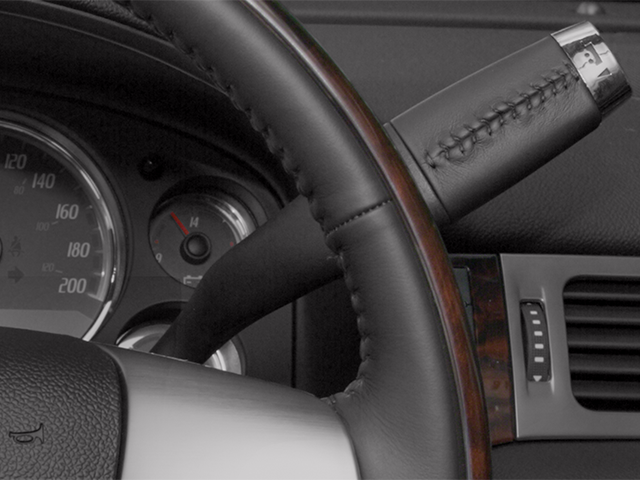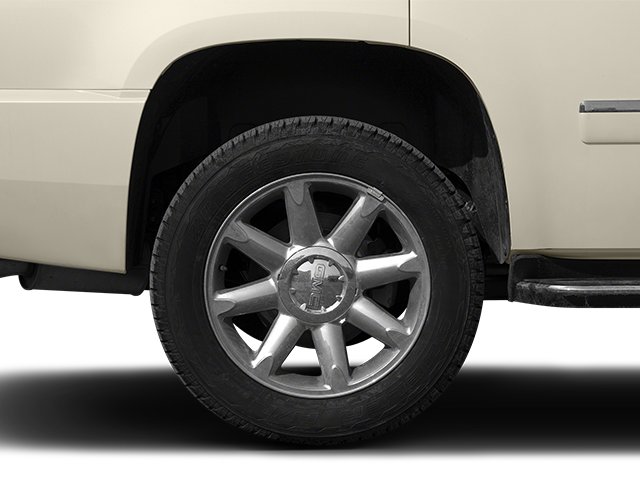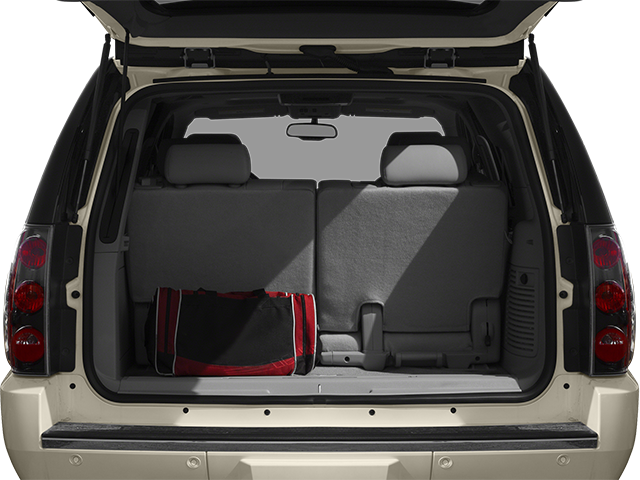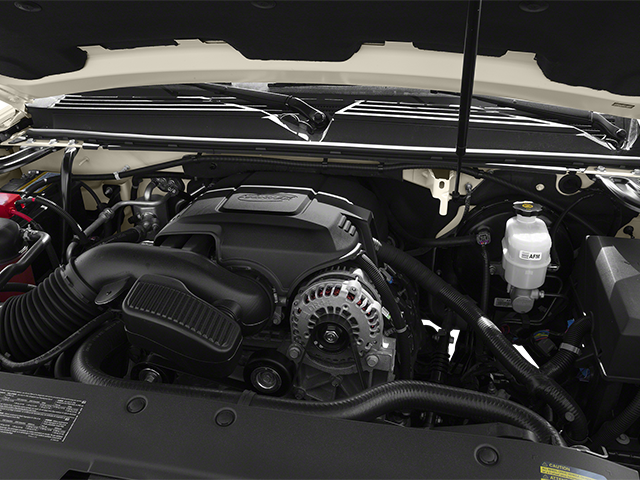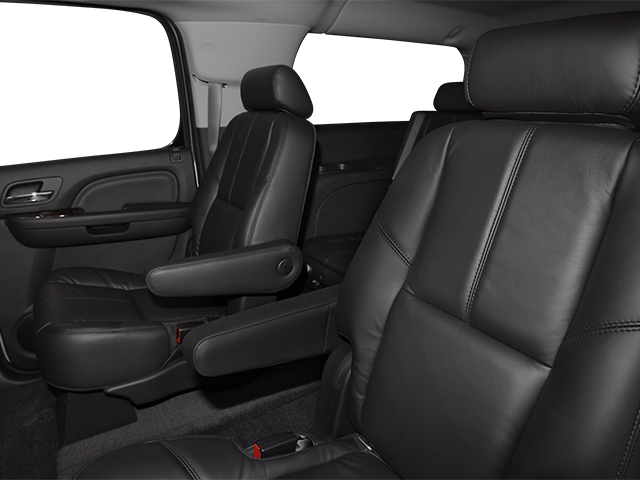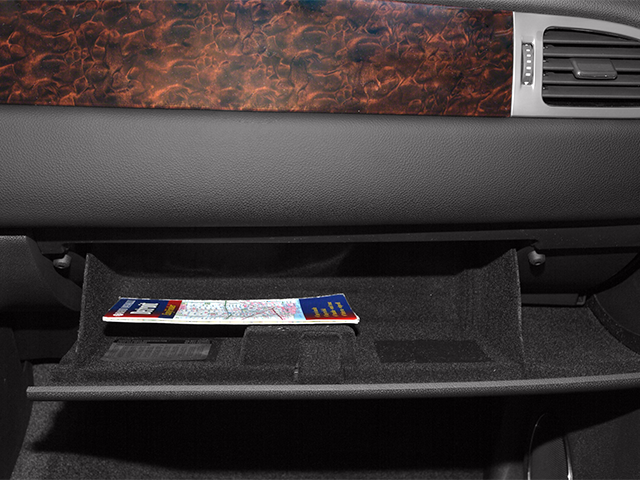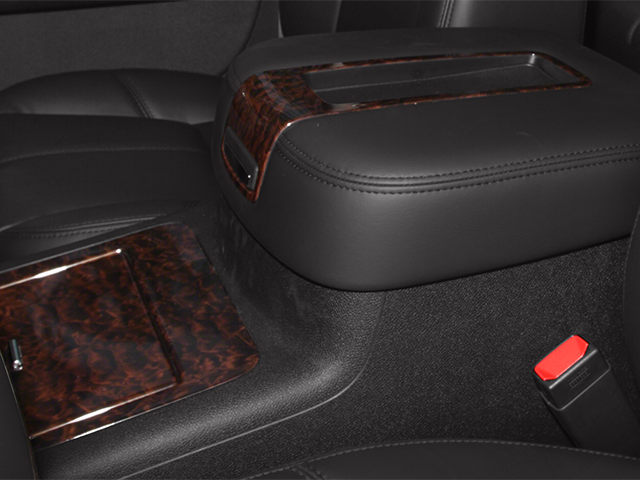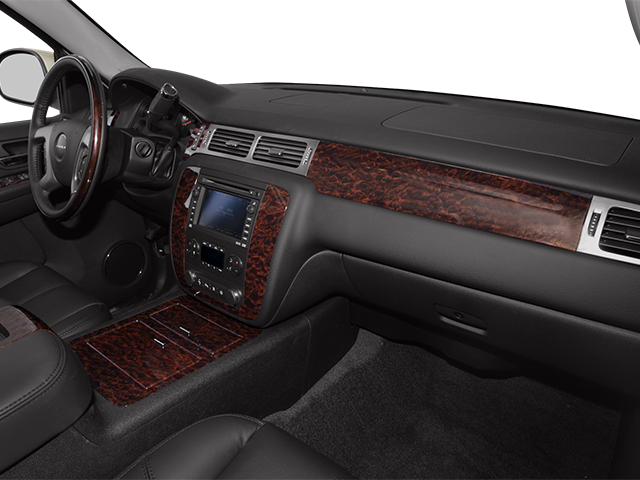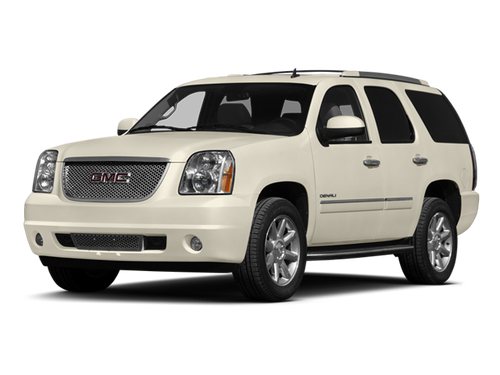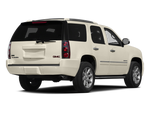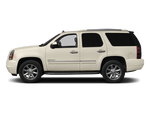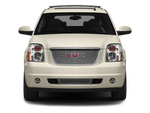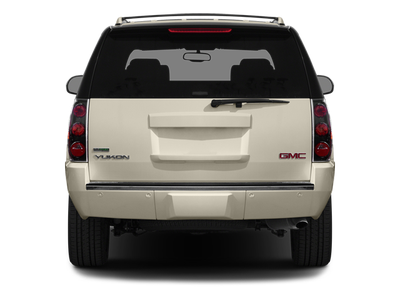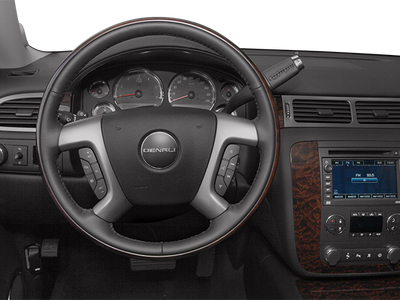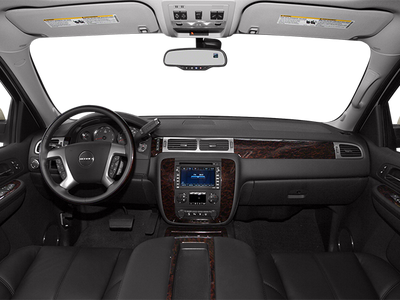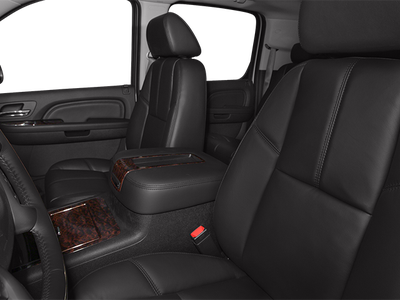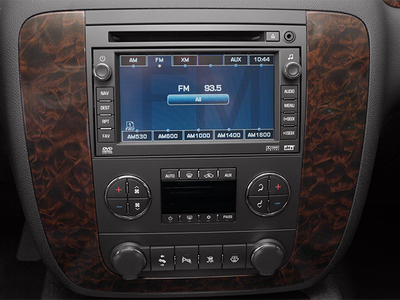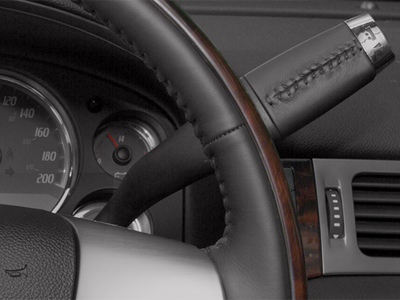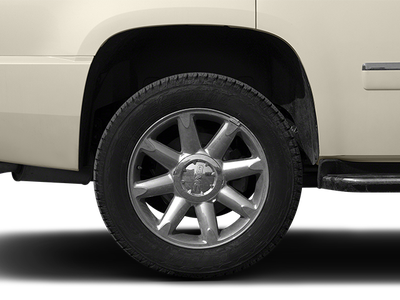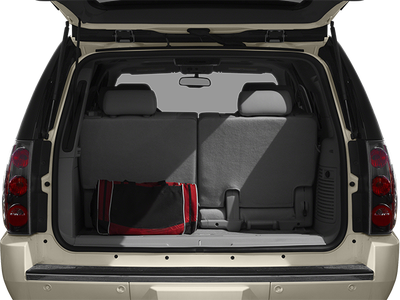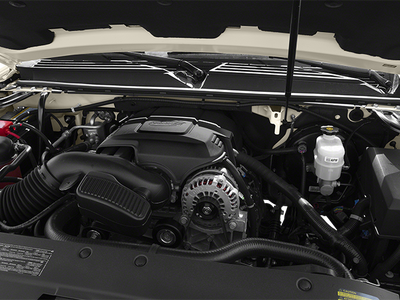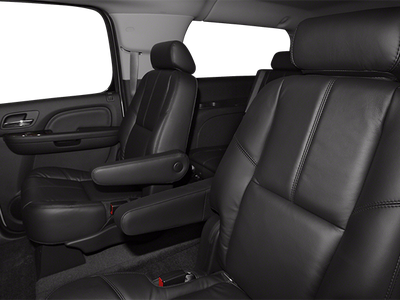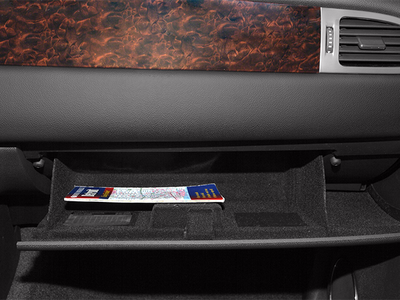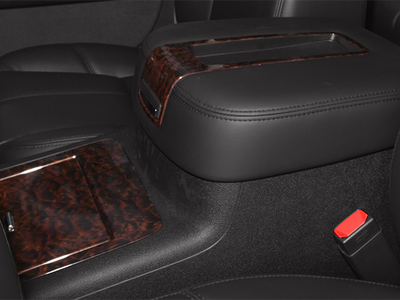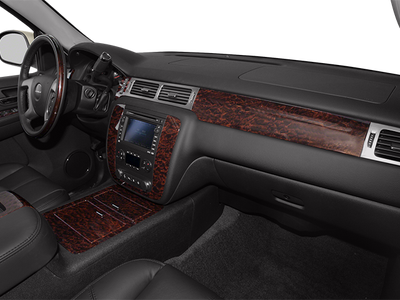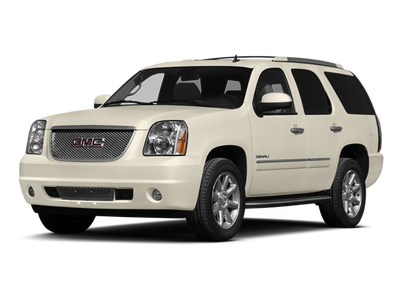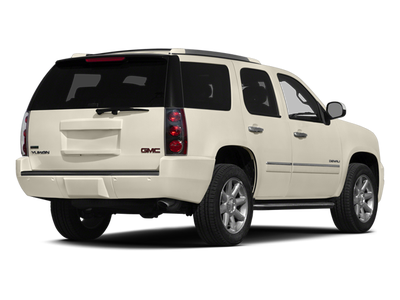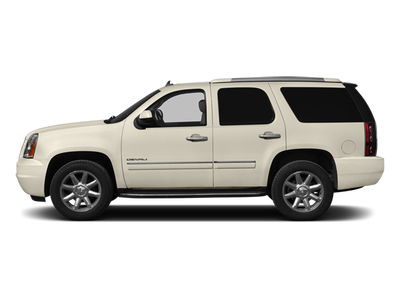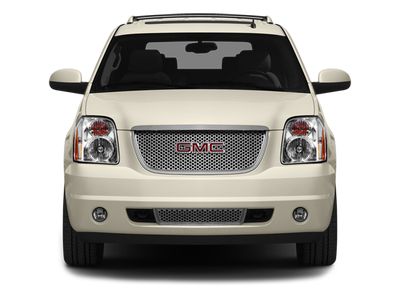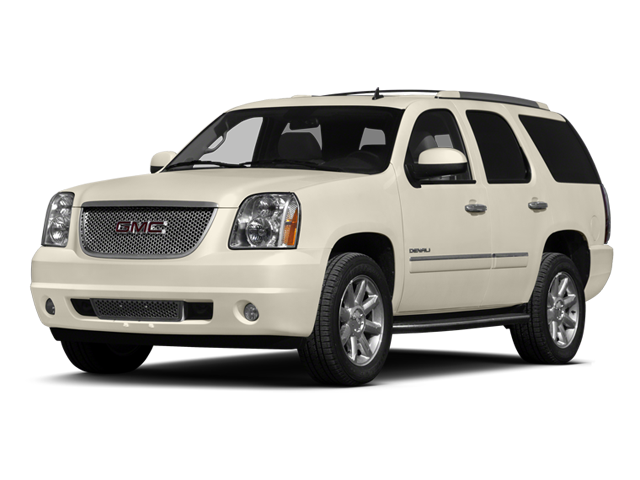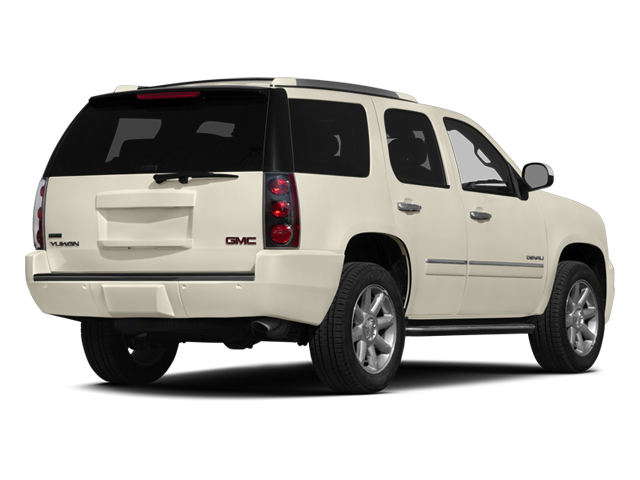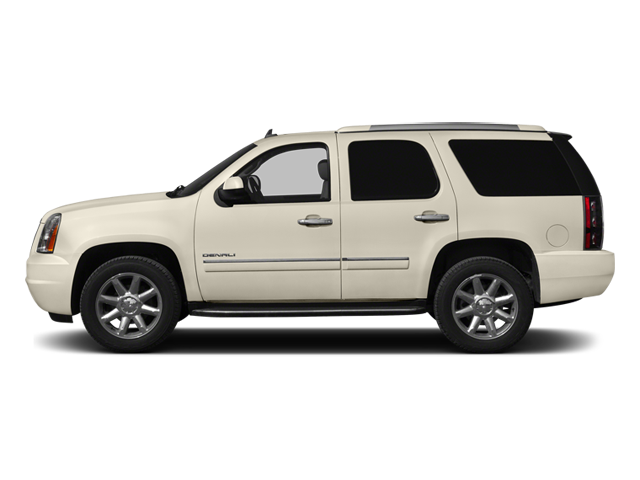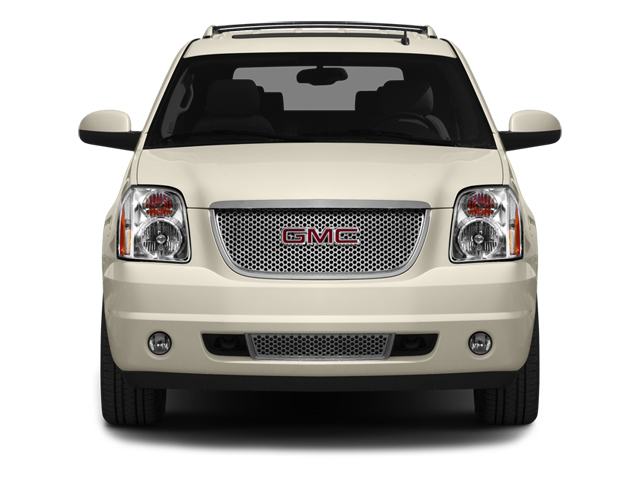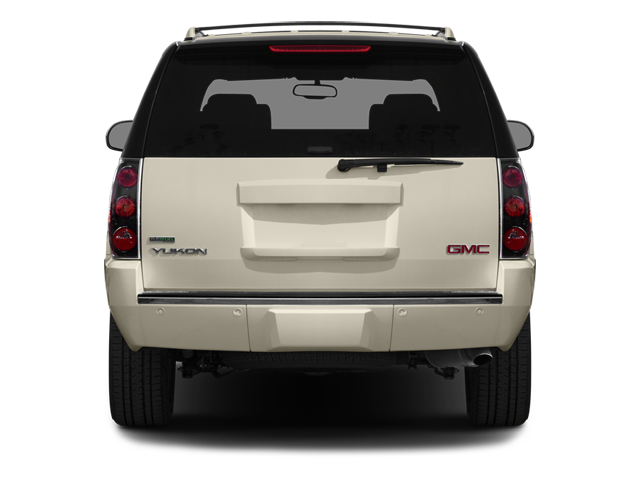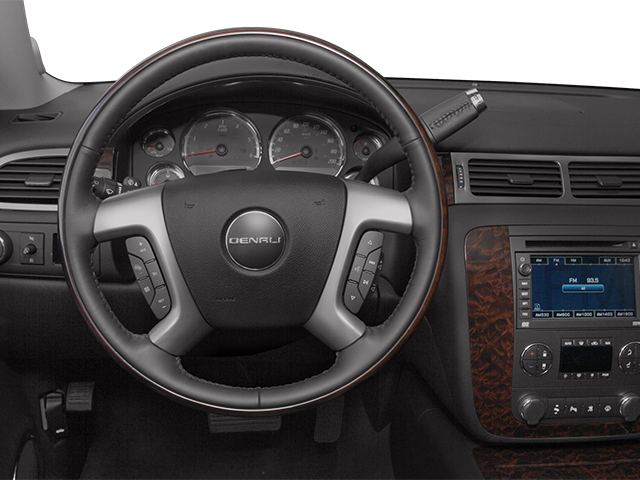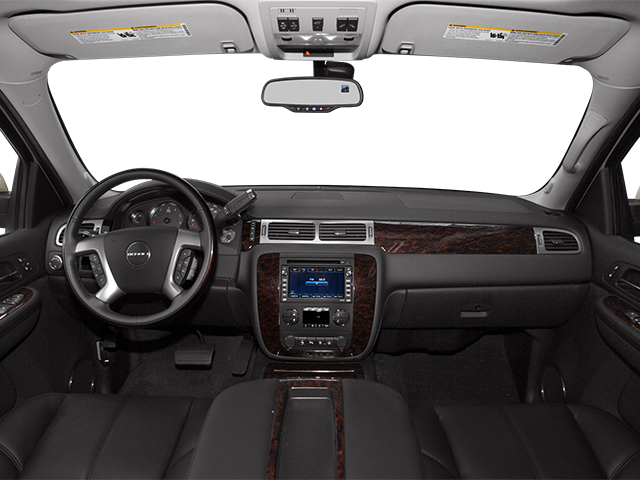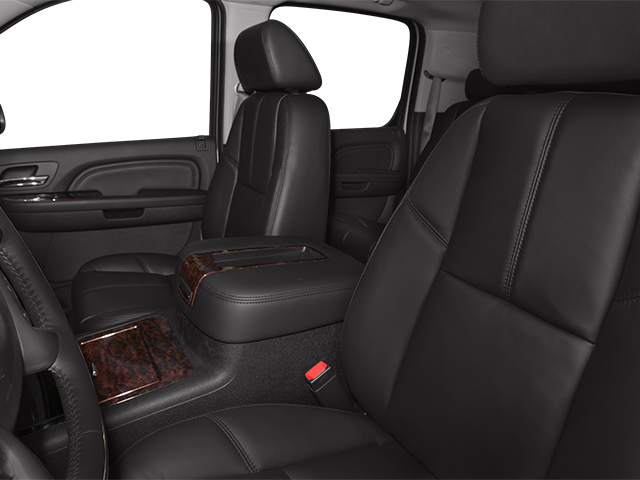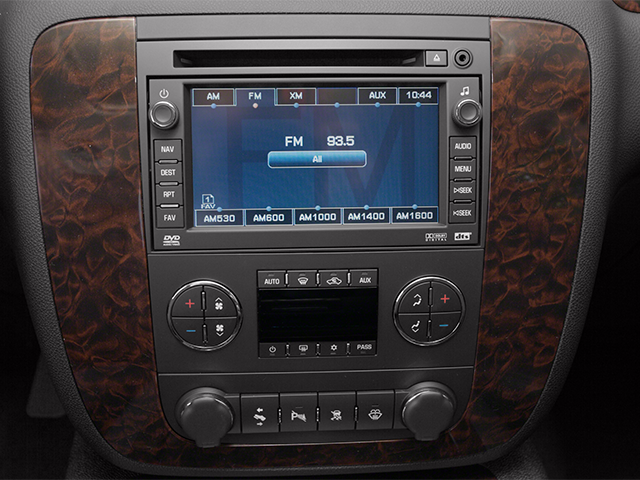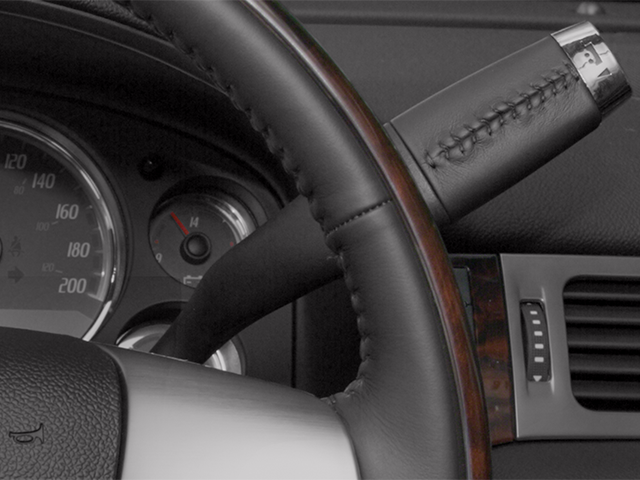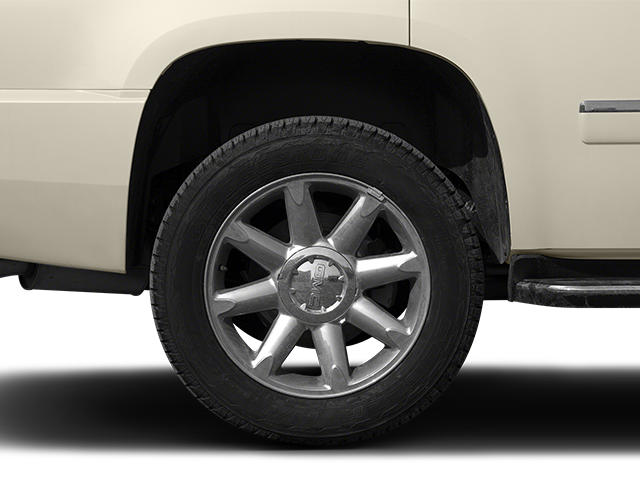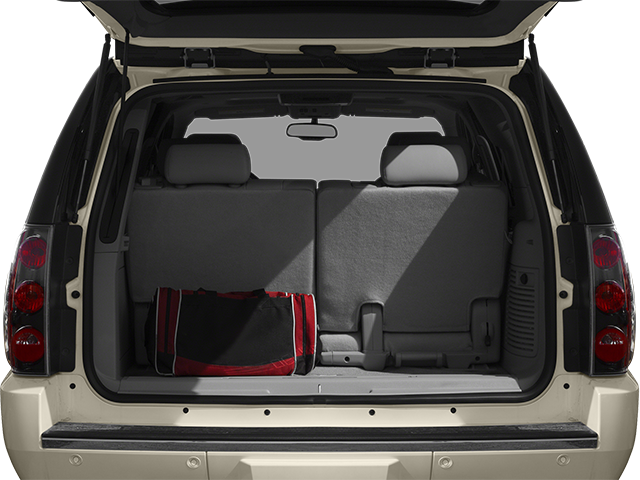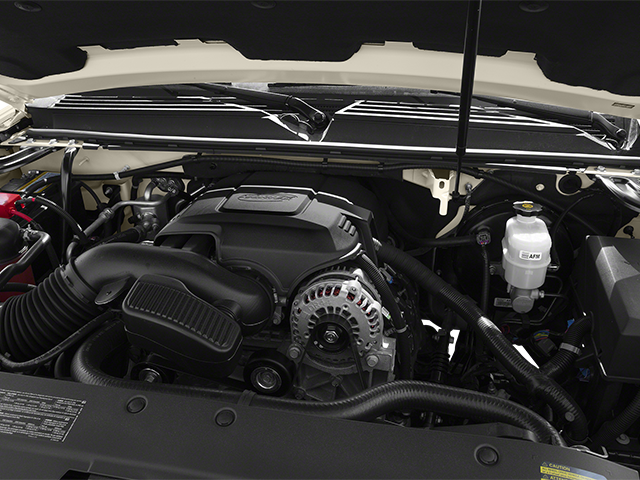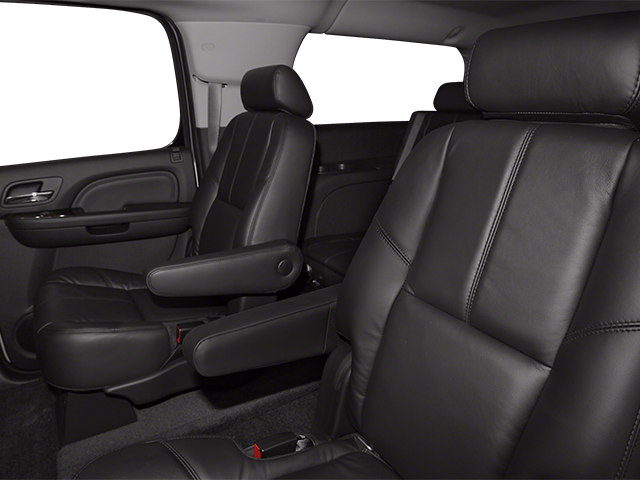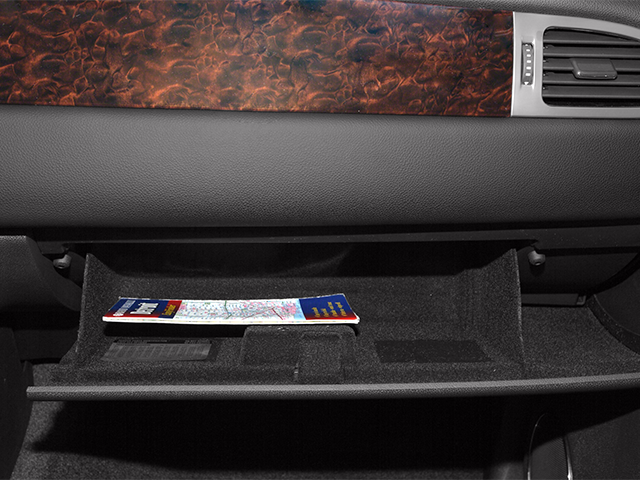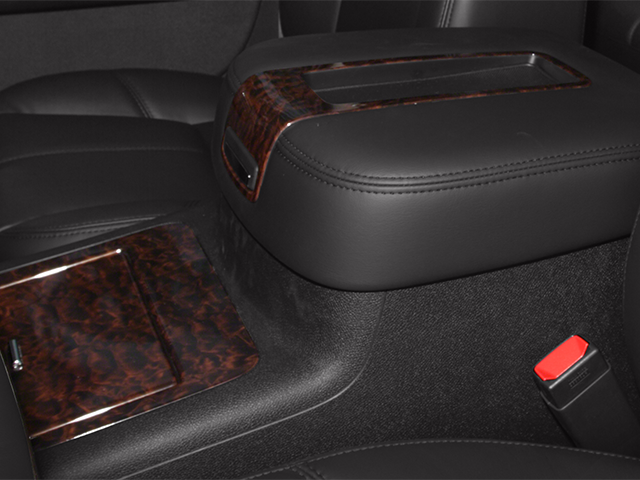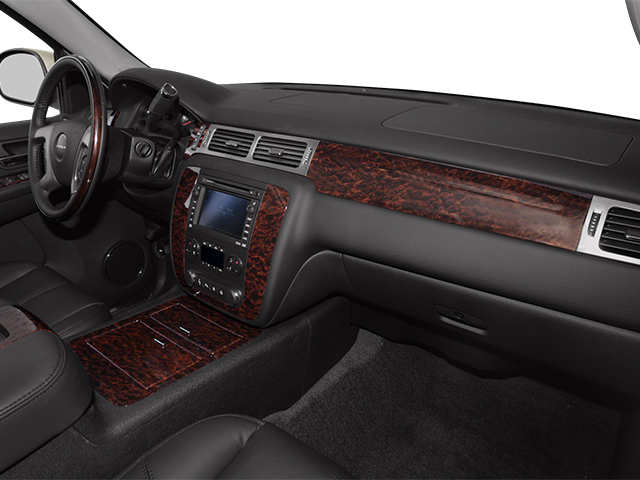2014 GMC Yukon Denali
Visit our Store
- Sapaugh Chevrolet Buick GMC
-
1435 Mcnutt Street
Herculaneum, MO 63048
- Sales: 636-334-9048
- Service: 636-486-4981
- Parts: 636-931-0055
Vehicle Information
-
Condition Used
-
 Body Style AWD 4dr Denali
Body Style AWD 4dr Denali -
Exterior Color White Diamond Tricoat
-
Interior Color Ebony, Perforated Nuance Leather-Appointed Seat Trim
-
Mileage 158,840
-
 City/Highway 13/18 MPG
City/Highway 13/18 MPG -
 Engine 8 Cylinder Engine
Engine 8 Cylinder Engine -
 Transmission Automatic / AWD
Transmission Automatic / AWD
Highlighted Features
- Bluetooth®
- Heated Steering Wheel
- 4WD/AWD
- Aux Input
- Heated Seats
- Sunroof/Moonroof
- Blind Spot Monitor
- Navigation System
- Satellite Radio
- Entertainment System
- Cruise Control
All Features
- Memory for 2 drivers: The seat(s) can be returned to a preset position at the touch of a button.
- Rear head restraint control: 2 rear seat head restraints
- Third-row head restraint number: 2 third-row head restraints
- 50-50 split folding third-row seats: The third-row seatback is split, allowing one or both sides to be folded down.
- Seats capacity: 7: Seating is provided for 7 passengers.
- Automatic air conditioning: Automatic air conditioning is a completely integrated electronic system. The system automatically adjusts thermostat and fan settings as needed to maintain a preset temperature. The system may also be operated manually when preferred.
- Auxiliary rear heater: An auxiliary rear heater is a completely independent heating system for the rear passenger compartment.
- Bucket front seats: Separate driver and front passenger seats with individual control are provided.
- Carpet front and rear floor mats: Front and rear carpeted floor mats are included.
- Rear seatback upholstery: Carpet rear seatback upholstery
- Third-row seatback upholstery: Carpet third-row seatback upholstery
- Interior accents: Chrome and metal-look interior accents
- Headliner material: Cloth headliner material
- Deep tinted windows: Some of the vehicle's glass has a dark, privacy tint.
- Power 4-way driver lumbar: Lumbar support is power adjustable in and out, as well as up and down.
- Power 4-way driver lumbar: Lumbar support is power adjustable in and out, as well as up and down.
- 8-way driver seat: The seat provides a variety of adjustments to enhance seating comfort.
- Dual zone front HVAC controls: Dual zone HVAC provides separate temperature controls for the driver and front passenger.
- Second-row seats fixed or removable: Fixed second-row seats
- Third-row seat facing: Front facing third-row seat
- Power 4-way front passenger lumbar: Lumbar support is power adjustable in and out, as well as up and down.
- 8-way passenger seat: The seat provides a variety of adjustments to enhance seating comfort.
- Front seat center armrest: A single center armrest divides the front seating positions.
- Full floor coverage: The entire passenger compartment floor is covered with flooring material.
- Full floor coverage: The entire passenger compartment floor is covered with flooring material.
- Headliner coverage: Full headliner coverage
- Heated driver and front passenger seatbacks: Heated seats offer cool weather comfort by warming the seat quickly, before the air in the passenger compartment is fully warmed by the heater.
- Heated rear seats: Heated seats offer cool weather comfort by warming the seat quickly, before the air in the passenger compartment is fully warmed by the heater.
- Heated steering wheel: The steering wheel rim is heated.
- Height adjustable rear seat head restraints: The head restraint(s) can be adjusted up or down.
- Height adjustable third-row head restraints: The head restraint(s) can be adjusted up or down.
- Height and tilt adjustable front seat head restraints: The head restraint(s) can be adjusted up or down as well as back and forth.
- Leather and simulated wood steering wheel: The steering wheel rim has sections wrapped in leather as well as simulated wood.
- Leather seat upholstery: The seating surfaces are covered in leather.
- Gearshifter material: Leather gear shifter material
- Leather rear seat upholstery: The seating surfaces are covered in leather.
- Leatherette door trim: The door trim insert is leatherette.
- Front seatback upholstery: Leatherette front seatback upholstery
- Front head restraint control: Manual front seat head restraint control
- Rear head restraint control: Manual rear seat head restraint control
- Manual reclining rear seat: The seatback angle is manually adjustable.
- Third-row manual head restraint: The head restraint is manually adjustable.
- Power passenger seat cushion tilt: The angle of the seat cushion can be power tilted up/down.
- Power adjustable pedals: The pedals can be electrically moved closer, or further away from the driver with the push on a button.
- Power tilt steering wheel: The steering wheel angle adjustment is electrically motorized.
- Rear HVAC with separate controls: Rear HVAC with separate controls provides rear passengers their own climate controls.
- Rear headliner/pillar ducts: Rear headliner/pillar ducts direct HVAC airflow to the rear passenger compartment.
- Rear underseat ducts: Rear underseat ducts direct HVAC airflow to the rear passenger compartment from under the front seats.
- Removable third-row seats: The third-row seat(s) are designed to be easily removed from the vehicle without the use of tools.
- Rear bucket seat(s): Rear bucket seats provide individual seating.
- Seat mounted rear seat armrests: The vehicle has an armrest attached to each side of the seat(s).
- Console insert material: Simulated wood console insert
- Door panel insert: Simulated wood door panel insert
- Panel insert: Simulated wood instrument panel insert
- Bench seats: Third-row split-bench seat
- Tumble forward rear seat: The seatback folds forward to rest on the seat cushion, then the entire seat assembly tumbles forward as one unit.
- Ventilated front seats: Ventilated seats offer warm weather comfort by cooling areas of the occupant's body not exposed to the air conditioning system.
- Vinyl third-row seat upholstery: The seating surfaces are covered in vinyl.
- Automatic air conditioning: Automatic air conditioning is a completely integrated electronic system. The system automatically adjusts thermostat and fan settings as needed to maintain a preset temperature. The system may also be operated manually when preferred.
- 2 seatback storage pockets: Two seatback storage pockets are provided.
- Maximum roof rack load: 200 lbs. maximum roof rack load
- 5 12V power outlets: Multiple 12-volt DC power outlets are provided.
- Auto-dimming driver side mirror: These mirrors contain a sensor and a film of light-sensitive molecules behind the mirror surface that automatically dim and reduce glare when it senses bright lights approaching the vehicle from the rear.
- Auto-dimming rear view mirror: An auto-dimming rear-view mirror automatically tints itself when excess glare is detected from traffic at night.
- Auto-locking doors: All doors are automatically locked when the vehicle is put into gear or a pre-determined speed is reached.
- Battery charge warning: A message, or specific light illuminates to indicate the vehicle's charging system is not producing acceptable levels.
- Cargo space concealed storage: A covered storage space is provided in the cargo area of the vehicle.
- Cargo light: A light provides illumination in the cargo area.
- Cargo tie downs: Cargo tie downs are secure mounting points in the cargo area designed to hold cargo firmly in place.
- Carpeted cargo space floor trim: The cargo area floor is covered with carpet.
- Compass: A display showing the direction the vehicle is traveling - on a global scale.
- Passenger doors rear left: Conventional left rear passenger door
- Passenger doors rear right: Conventional right rear passenger door
- Covered floor console storage: The floor console offers a covered space to store items.
- Cruise control with steering wheel mounted controls: Cruise control maintains a preset vehicle speed; automatically increasing or decreasing throttle to maintain that speed.
- Day-night rear view mirror: An interior, rear-view mirror that has a manually operated switch that adjusts the mirror slightly, up or down, to reduce glare from traffic at night.
- Passenger door bin: The inner door panel has an integrated storage bin.
- Driver information center: A driver information center is a display screen that provides the driver with vehicle information and/or warnings in graphical and/or textual form.
- Driver one-touch down window: A one-touch down power driver's window lowers the glass completely with one press of the button.
- Driver vanity mirror: The visor has a mirror incorporated into its design.
- Exterior temp display: Displays the temperature of the ambient air outside the vehicle.
- Fixed interval rear wiper: A fixed interval rear wiper has a setting for non-adjustable, delayed wiping.
- Third-row windows: Fixed third-row windows
- Flip-up rear windshield: The rear windshield can be opened upwards, usually independently of the rear cargo door.
- Front beverage holder(s): An area is provided to securely hold beverages.
- Rear seat direction: Front facing rear seat
- Front reading lights: Spot lighting is provided for the driver and front passenger that is brighter and more focused than the dome lamp.
- Full floor console: A full floor console separates the front seating areas and divides the footwell.
- Garage door transmitter: The integral garage door transmitter can be programmed to open and close garage doors or activate other electronically controlled devices.
- Heated passenger side door mirror: A heating element within the housing clears condensation, frost and ice from the mirror's surface.
- Illuminated driver vanity mirror: The visor has an illuminated mirror incorporated into its design.
- Illuminated passenger vanity mirror: The visor has an illuminated mirror incorporated into its design.
- Clock: In-radio display clock
- Keyfob activated door locks (all doors): A handheld keyfob capable of remotely operating all the door locks.
- Keyfob vehicle start control: The keyfob has the ability to remotely start the vehicle.
- Keyfob Cargo Access Control: The keyfob has a dedicated button for unlocking the cargo area trunk/hatch/door.
- Locking glove box: A locking glove box provides secured storage space.
- Low fuel warning: A message, or specific light illuminates to indicate the vehicle will run out of fuel soon, and refilling the tank is required.
- Steering wheel memory: The electrically adjustable steering wheel can be programmed to automatically return to different preferred positions.
- Mini overhead console: A short console, mounted to the headliner of the vehicle, that may contain several useful features such as map lights and storage.
- Oil pressure gage
- Oil pressure warning
- Passenger vanity mirror: The visor has a mirror incorporated into its design.
- Plastic trunk lid trim: The inside of the trunk lid or cargo access door(s) is covered with plastic.
- Power cargo area access remote release: A remote release provides access to the cargo area via a button located in the passenger compartment.
- Power door locks with 2 stage unlocking: A two-stage power door lock system can unlock the driver's door only or, if desired, all doors.
- Power passenger door mirror with tilt-down in reverse: The passenger side door mirror is adjusted from the interior of the vehicle by an electric switch which can modify the angle of the mirror surface. The mirror surface also tilts down when the car is placed in reverse.
- Power first-row side windows: The first-row of glass on the side of the vehicle can be raised and lowered by electric motors.
- Power folding driver side door mirror: The driver can electronically fold these mirrors inwards so that the mirror surface faces the exterior panel of the car.
- Power open and close liftgate: Access to the cargo area is gained via a large, power-operated rear door that opens upwards. This door may also contain the rear windshield of the vehicle.
- Power second-row side windows: The second-row of glass on the side of the vehicle can retract into the body electrically.
- Rear beverage holder(s): An area is provided to securely hold beverages.
- Trunk/liftgate ajar warning: A message, or specific light illuminates to indicate the rear cargo door/trunk/hatch or middle gate is open.
- Rear reading lights: Spot lighting is provided for rear passengers that is brighter and more focused than the dome lamp.
- Keyfob activated rear window release: A remote release unlatches the rear window with a dedicated button on the keyfob.
- Rear window defroster: Heating elements on the rear windshield.
- Service interval indicator: A message, or specific light illuminates to indicate the vehicle needs to be taken in for routine servicing (oil change).
- Steering wheel mounted audio controls: Auxiliary controls for the audio system are located on the steering wheel.
- Tachometer
- Tailgate/rear door lock included with power doors locks: The tailgate/rear door locking is integrated into the rest of the power lock system just like any other door on the vehicle.
- Trip computer: A trip computer calculates and can display any, or all of the following functions: current fuel consumption, average speed, distance traveled, elapsed time, distance to empty and remaining fuel.
- Trip odometer: A trip odometer counts the miles or kilometers the vehicle travels and can be reset by the driver.
- Trunk/hatch auto-latching: An auto-latching trunk/hatch is an electrically-assisted closing feature that gently pulls the trunk/hatch snug once it is set on its latch.
- Turn signal on warning: A message, or specific light illuminates to indicate the vehicle's turn signal is operating while the vehicle is not turning.
- Variable IP lighting: The intensity of the instrument panel lighting can be adjusted manually.
- Variable intermittent front windshield wipers: The vehicle's front wiper system has low and high speeds, as well as a variable intermittent setting to change the pause length between wipes.
- Voltmeter
- Front tow hooks: Front bumper tow hooks are large, easily visible hooks that are attached to the exterior of the vehicle's bumper.
- Steel wheels: Basic steel wheels are stamped from sheet metal and are designed to accommodate full wheel covers.
- Number of doors: 4 doors
- Window Trim: Black side window trim
- Windshield trim: Black windshield trim
- Body-colored bodyside moldings: Body color bodyside molding is a piece of rubber, plastic, or vinyl that is attached to the exterior side of the vehicle.
- Door mirror style: Body-colored door mirrors
- Bumpers front: Body-colored front bumper
- Bumpers rear: Body-colored rear bumper
- Bodyside insert: Chrome bodyside insert
- Door handle material: Chrome door handles
- Bumper insert: Chrome front bumper insert
- Grille style: Chrome grille
- Class IV rating: A trailer hitch rated to safely tow weights up to approximately 12,000 lbs. (Weight Distributing) / 10,000 lbs. (Weight Carrying).
- Spare tire mounted under body with crankdown: The spare tire stores beneath the vehicle in a crankdown carrier.
- First-row power express open/close sunroof: This sunroof requires the occupant to depress a button/switch to allow an electric motor to open or close the sunroof. The button/switch can be simply pressed once for the sunroof to fully open or close.
- Roof rack: A roof rack consists of rails that are raised from the exterior surface of the roof. These rails run the length of the roof and are coupled with crossbars that span across from one rail to the other.
- Full-size spare tire: A full-size spare tire will match or closely duplicate the specifications of the running tires.
- Fully galvanized steel body panels: Galvanized steel body panels are found on the vehicle's entire exterior.
- Special paint: Monotone paint
- AS tires: All-season tires are designed to provide good all-around traction and handling, and a smooth, quiet ride in all conditions.
- Power running boards: Power running boards are tucked underneath the vehicle when not required. They automatically lower from their concealed position when the doors are opened.
- Rear step bumper: A rear bumper with an adequate surface to stand on, that is strong enough to support the weight of a person without causing damage to the bumper. Usually has a protective covering to prevent damage to the finish.
- Rear lip spoiler: A lip style rear spoiler is an additional, molded air foil piece attached to the rear of the vehicle. This type of spoiler has no gap between it and the vehicle.
- Trailer hitch: A trailer hitch is the main structure that is attached to the rear of the vehicle, allowing the vehicle to be used for towing.
- Trailer sway control: A computer-controlled system used to automatically counteract trailer sway. When the computer senses the vehicle has left the driver's intended path, it will automatically apply select brakes to regain control and restore the intended path of the vehicle and trailer.
- Trailer towing capability: Trailer towing is approved to specific limits, depending on equipment, as specified in the owner's guide.
- Wiring harness: The trailer wiring harness is the electrical connection required to operate the trailer's running lights and brake lights. Some harnesses may include a connection for the trailer's auxiliary brakes.
- Tri-coat paint: A base/clear paint with a midcoat layer for special effects.
- Fuel economy (city/highway/combined): 13/18/15 MPG
- Emissions tiers: Tier 2 Bin 4 emissions
- First-row display screen: One or more screens are located in the vehicle's first row of seating.
- Second-row entertainment display: One or more entertainment display screens are located in the vehicle's second row of seating.
- Speakers number: 10 speakers
- Headphones number: 2 headphones
- Internal memory capacity : The digital memory storage capacity associated with the vehicle's audio system, measured in gigabytes (GB).
- LCD primary display size: 7 inch primary LCD display
- AM/FM/satellite radio: In addition to AM and FM radio reception, this radio, when properly equipped, is capable of receiving digital radio signals from a satellite.
- Regular grade amplifier: An amplifier increases the power, which in turn improves the sound of the audio system.
- Wireless headphones: The vehicle is equipped with a set (or sets) of wireless headphones.
- Audio-video remote control
- Automatic equalizer: An automatic equalizer includes several preset acoustic environments (e.g., concert hall, rock, jazz, talk, etc.) that optimize the sound quality for different types of music or special listening preferences.
- Auxiliary input jack: Any means of input that allows audio to flow from, and be controlled by, an external device through the vehicle's primary audio system. The most common forms of auxiliary audio input are: RCA or a 3.5 mm jack.
- Speed sensitive volume: An automatic volume that increases/decreases the volume of the audio system based on vehicle speed.
- Digital signal processor: A digital signal processor (DSP) alters the sound characteristics and timing of the audio system.
- CD-MP3 decoder: The CD player can play regular CDs and those recorded in the compressed MP3 digital format.
- CD player located in dash: The CD player is located in the dash of the vehicle.
- DVD-Audio playback: DVD-Audio is a format for delivering high-fidelity audio content on a DVD disc.
- External memory control: The vehicle can directly access and control digital memory stored on a hard-drive or memory card/stick. Digital memory can contain audio, video, pictures, or general files.
- Internal memory: Digital memory storage permanently contained within the vehicle, associated with the audio system.
- Multi-source rear audio controls: Multi-source rear audio controls permit passengers to access different entertainment sources at the same time, with access to an auxiliary source through earphones.
- Radio data system (RDS): The audio system is capable of receiving a Radio Data System (RDS) sub-channel, broadcast by some radio stations, which contains identification and programming information.
- Rear Entertainment system with DVD: The vehicle is equipped with a rear entertainment system that plays DVDs.
- Seek scan
- CD: Single-disc CD player
- Audio system theft deterrent: The in-dash headunit incorporates anti-theft circuitry. Typically, if power to it is disconnected, function can only be restored by entering a code number.
- Window grid antenna: The antenna that receives AM/FM broadcasts is imprinted onto a pane of the vehicle's glass.
- Valves per cylinder: 2
- Steering type number of wheels: 2-wheel steering system
- Horsepower: 403 HP @5700 RPM
- Displacement: 6.2 L
- All wheel drive: All-wheel drive supplies power to both the front and rear axles all the time. Power is instantly redirected by the center differential to the wheels with greater traction when slip is detected. Unlike full-time 4-wheel drive systems, there is no 2-speed transfer case for 4WD Low operation.
- Alternator: The alternator is an electromagnetic device that converts mechanical energy into electrical energy.
- Rear auto-leveling suspension: The rear suspension adjusts automatically to maintain a preset vehicle level, regardless of luggage weight or passenger load.
- Automatic locking rear differential: A locking differential forces both wheels on the drive axle to rotate together, at the same rate, regardless which wheel has traction.
- Automatic suspension ride control: Automatic Ride Control adjusts vehicle shock absorber resistance (damping) in response to driver inputs such as steering and braking and for changes in road surface. During maneuvers such as hard braking or quick lane changes, the system increases suspension damping to improve dynamic stability. Damping is automatically decreased during steady driving, so that bumps and potholes are absorbed rather than being transmitted to the occupants.
- Battery run down protection: Battery run-down protection automatically turns off interior lights and accessory power after a set time period, or when the battery power level reaches a predetermined point, in order to prevent excessive power drain on the battery.
- Four channel ABS brakes: Four channel ABS monitors and operates on each wheel individually.
- Front and rear ventilated disc brakes: The superior braking characteristics of 4-wheel disc brakes are augmented by incorporating channels, or vents, to promote air circulation. This provides better heat dissipation for cooler operation to maximize braking effectiveness.
- Front anti-roll bar: An anti-roll bar, also called anti-sway or stabilizer bar, is a transversely mounted link connecting the right and left sides of the suspension. Body roll or individual wheel movement causes the bar to twist, adding its own spring rate to that of the vehicle's springs to help reduce body roll.
- Front coil springs: A spiral-shaped spring that can be compressed or extended without permanent deformation.
- All wheel drive: All-wheel drive supplies power to both the front and rear axles all the time. Power is instantly redirected by the center differential to the wheels with greater traction when slip is detected. Unlike full-time 4-wheel drive systems, there is no 2-speed transfer case for 4WD Low operation.
- Powertrain type: ICE
- Independent front suspension: Independent front suspension allows either wheel to track over road imperfections with minimal effect on the opposite wheel.
- Battery type: Lead acid battery
- Mechanical limited slip differential: A mechanical limited slip differential uses a set of gears and clutches that moderates wheel spin by transmitting torque to the driving wheel with the best traction.
- Multi-link rear suspension: In this independent rear suspension, three or more lateral arms and one or more longitudinal arms are used to locate the rear wheels and to absorb braking and acceleration forces.
- Permanently locked 4WD wheel hubs: The front hubs are permanently engaged to transmit power to the wheels.
- Rack-pinion steering: Rack-and-pinion steering is a simple and direct system that uses a gear (pinion) meshing with a toothed bar (rack) to directly actuate the steering linkage.
- Rear anti-roll bar: An anti-roll bar, also called anti-sway or stabilizer bar, is a transversely mounted link connecting the right and left sides of the suspension. Body roll or individual wheel movement causes the bar to twist, adding its own spring rate to that of the vehicle's springs to help reduce body roll.
- Rear coil springs : A spiral-shaped spring that can be compressed or extended without permanent deformation.
- Fuel Type: Regular Unleaded
- Regular grade rear springs: Springs are an integral part of a vehicle's suspension system. They control motions and absorb impacts caused by tires passing over uneven road surfaces to reduce the effect on the vehicle body and spreading the weight of a load more widely over the vehicle's chassis.
- Rigid axle rear suspension: A simple non-independent suspension consisting of a rigid transverse member with wheel hubs that are solidly bolted to it. The axle can be attached to the vehicle body by leaf springs or by a combination of suspension arms and links.
- Short & long arm front suspension: This independent front suspension uses unequal length control arms to locate the front wheels. The upper arm is usually shorter than the lower arm to control camber changes during jounce and rebound.
- Spark ignition system: Contemporary ignition systems provide a high level of spark energy to ensure ignition under a wide variety of operating conditions
- Stainless steel exhaust system: Stainless steel construction is used for the exhaust system.
- Touring suspension: A touring suspension is tuned to deliver precise, sports car-like handling and still provide an exceptional level of ride comfort. This is accomplished with carefully matching suspension components and tires.
- Seatbelt pretensioners number: 2 seatbelt pre-tensioners
- 4-wheel ABS brakes: 4-wheel anti-lock brakes use computer-controlled sensors to continuously monitor the rotational speed of each wheel. When impending wheel lockup is detected the computer signals the hydraulic system to pump the brakes more quickly than human reflexes permit.
- 4 wheel disc brakes: 4-wheel disc brakes consist of a disc at each wheel that rotates at wheel speed, straddled by a caliper that squeezes the disc (rotor) with friction pads to provide braking.
- 6 airbags: Airbags are designed to cushion the occupants' impact and therefore reduce the possibility of serious injury in the event of a crash.
- Reflector headlamps: Durable composite, or polycarbonate, headlamp units incorporate efficient optics for excellent lighting. Most modern units focus light using multi-reflectors rather than the lens.
- Airbag occupancy sensor: Determines if a seat is being used, either by weight and/or occupancy position sensors within the seat. These factors help to determine which airbags should and should not inflate, and the intensity with which they should deploy, in the event of a collision.
- Analog instrumentation display: The majority of the instrument cluster gauges are a traditional analog style or are a digital representation of analog gauges and their movement.
- Auto on/off headlamp control: A sensor controls the vehicle lamps, turning on or off all the lights, including the headlights at full power, depending on ambient light conditions.
- Blind spot warning: A blind spot detection system will alert the driver when another vehicle is within the warning zone.
- Curtain first, second and third row overhead airbags: Airbags are designed to cushion the occupants' impact and therefore reduce the possibility of serious injury in the event of a crash.
- Daytime running lights: Daytime running lights provide headlamp illumination as soon as the vehicle is started.
- Delay-off headlamps: When the vehicle is turned off the headlamps automatically turn off after a preset time delay.
- Driver front impact airbag: Airbags are designed to cushion the occupants' impact and therefore reduce the possibility of serious injury in the event of a crash.
- Fade dome light: A fade dome light remains on for several seconds after the door(s) have been shut, then slowly begins to dim until it has shut itself off.
- Fog lights: Front fog lights extend the lighting range beyond the capabilities of many standard headlamp systems.
- Height adjustable front seatbelts: The upper anchor point of the outboard front seats can be raised or lowered manually.
- Front seatbelt pretensioners: Pyrotechnic retractors quickly remove slack from the safety belts in a crash exceeding a preset level of severity.
- Halogen beam headlamps: Halogen headlamps are standard on most vehicles. They produce a bright white light.
- Center high mounted stop light: The auxiliary brake light (CHMSL) is located in a center position at the rear of the vehicle, higher than traditional brake lamps.
- Hill hold control: When starting from an incline position, the vehicle automatically applies brake force to prevent itself from rolling back.
- Illuminated entry: An illuminated entry system lights the interior before opening a door, and illumination is sustained for a period of time after a door is closed.
- Manual rear child safety locks: Child safety locks prevent the rear doors from being opened from the inside.
- Tracker system: The vehicle is equipped with a means of externally monitoring its position in case of theft.
- Passenger front impact airbag: Airbags are designed to cushion the occupants impact and therefore reduce the possibility of serious injury in the event of a crash.
- Ignition immobilizer: Ignition immobilizer is a passive means of security. It consists of a transmitter embedded within the ignition key and a sensor located in the vehicle. These two circuits must be present, and must recognize each other before the vehicle will start.
- Rear parking sensors: Rear mounted sensors warn the driver if the vehicle is too close to an object or if the vehicle is about to collide with an object during low-speed maneuvers such as parking or reversing.
- Rear camera: The vehicle is equipped with a camera that displays an image of the area behind the vehicle on an interior display.
- Remote activated perimeter approach lighting: Perimeter approach lighting provides illumination around the vehicle as the owner approaches and unlocks the vehicle with the keyfob.
- Panic alarm: A button on the remote keyfob that, when pressed, will activate the vehicle's horn or siren, interior lights, and cause the exterior lights to flash.
- Seat mounted driver side impact airbag: Airbags are designed to cushion the occupants' impact and therefore reduce the possibility of serious injury in the event of a crash.
- Seat mounted passenger side impact airbag: Airbags are designed to cushion the occupants' impact and therefore reduce the possibility of serious injury in the event of a crash.
- Security system: The vehicle is equipped with a means of anticipating and/or detecting unwanted vehicle intrusion.
- Low tire air pressure warning (tire specific): A message, or specific light illuminates to indicate exactly which tire is under inflated or will display the exact pressure in each tire. Some systems also monitor the spare tire.
- Turn signal indicator in driver door mirror: A turn signal flasher is incorporated in the surface of the mirror, or is built into the mirror housing.
- Wireless connectivity: Otherwise known as Bluetooth®, this technology allows electronic devices to integrate with the vehicle systems without the need for a physical connection between them.
- Voice activated integrated navigation system: The vehicle is equipped with a built-in voice activated navigation system.
- Real-time traffic display: A visual display of current local traffic in real-time. Typically displayed on the navigation screen.
- Vehicle integrated emergency SOS system: An emergency SOS. system integrated into the vehicle provides an immediate connection with the push of a button, to an emergency aid representative who can summon medical, police or roadside assistance. The system precisely locates the vehicle through the Global Positioning System (GPS). It will also automatically call if an airbag is deployed.
- Smart device app link: The vehicle infotainment system then connects to the smart device via a manufacturer specific app, allowing limited access and control of specific apps located on the smart device.
- Turn-by-turn navigation directions: The vehicle is capable of accessing a remote service which then provides turn-by-turn voice and/or visual navigation guidance.
- Selective Internet access: The owner of the vehicle has the ability to tailor their emergency S.O.S. and concierge services via the internet.
- DriveType: AWD
- City: 13 MPG
- Hwy: 18 MPG
- Combined: 15 MPG
- Fuel System: Electronic Fuel Injection
- Fuel Tank Capacity: 26 gal
- Fuel Type: Flex Fuel Capability
- Horse Power: 403
- Trailering Capacity: 0
Must print out and present at dealership upon arrival to receive the special Internet price. We work hard to ensure prices posted are accurate. All prices are subject to change and occasional errors are made. Dealership does not guarantee any online prices. All prices must be verified at the dealership.
MPG estimates on this website are EPA estimates; your actual mileage may vary. For used vehicles, MPG estimates are EPA estimates for the vehicle when it was new. The EPA periodically modifies its MPG calculation methodology; all MPG estimates are based on the methodology in effect when the vehicles were new (please see the Fuel Economy portion of the EPA's website for details, including a MPG recalculation tool).
Must print out and present at dealership upon arrival to receive the special Internet price. We work hard to ensure prices posted are accurate. All prices are subject to change and occasional errors are made. Dealership does not guarantee any online prices. All prices must be verified at the dealership.
MPG estimates on this website are EPA estimates; your actual mileage may vary. For used vehicles, MPG estimates are EPA estimates for the vehicle when it was new. The EPA periodically modifies its MPG calculation methodology; all MPG estimates are based on the methodology in effect when the vehicles were new (please see the Fuel Economy portion of the EPA's website for details, including a MPG recalculation tool).





